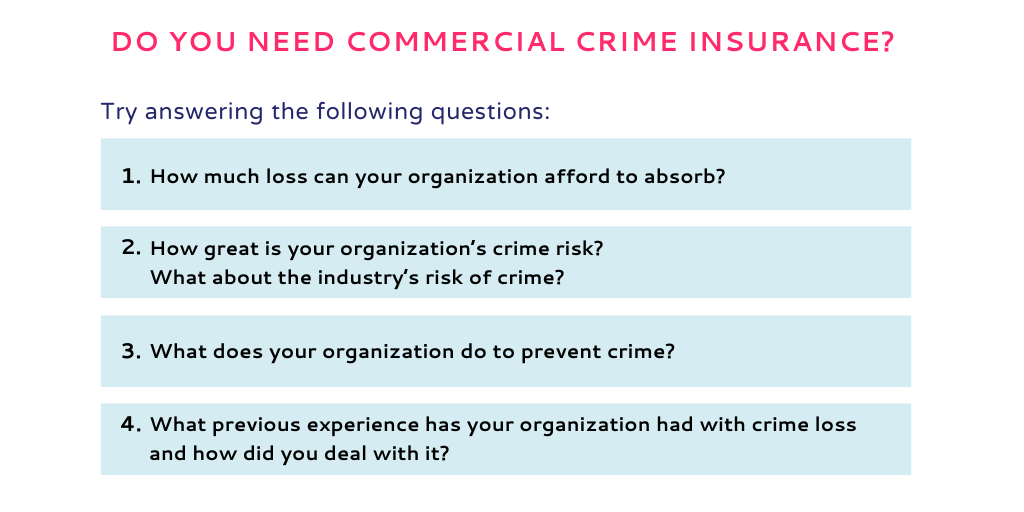Comprehensive Guide to Oil Spill Cleanup Coverage, Event Weather Insurance Claim Process, and Cross – border M&A Insurance
Looking for a comprehensive buying guide on oil spill cleanup coverage, event weather insurance claim process, and cross – border M&A insurance? You’re in the right place! Large – scale oil spills can cost billions, as a SEMrush 2023 study shows. The J.D. Power 2025 U.S. Property Claims Satisfaction Study emphasizes the importance of knowing event weather insurance claims. Cross – border M&A transactions, growing 10% annually, need proper insurance. Compare premium vs counterfeit models. We offer Best Price Guarantee and Free Installation Included. Act now to secure the best deal for your needs!
Oil Spill Cleanup Coverage
Did you know that large – scale oil spills can cost tens of billions of dollars in cleanup, fines, and damages? For instance, the cleanup alone for a major spill cost an estimated ~US$10 billion with inflation, and with additional fines and damages, it reached ~US$14 billion or US$378,000/MT (SEMrush 2023 Study). Understanding oil spill cleanup coverage is essential for both residential and commercial property owners.
General overview
Coverage for cleanup and repair of fuel oil spill/leak at residence
Coverage for fuel oil spill or leak at a residence can be a lifesaver for homeowners. It typically includes the cost of cleaning up the spilled oil, repairing any damage to the property caused by the spill, and in some cases, addressing contamination of groundwater. For example, if an underground oil tank at a home leaks, the coverage can pay for the tank removal, soil decontamination, and repairs to any affected structures on the property.
Exclusion in standard home insurance policies
It’s important to note that standard home insurance policies usually exclude coverage for fuel contamination to personal property, groundwater, and a neighbor’s property. This means that unless you have an additional rider or a specialized policy, you may be left to cover the costs of an oil spill out of pocket.
Cost
Average range ($50 – $100 or $100 – $150)
The cost of oil spill cleanup coverage can vary widely. On average, it may fall within the range of $50 – $150. However, this can be influenced by several factors such as the size of the property, the history of oil – related incidents in the area, and the amount of coverage needed. According to industry benchmarks, smaller properties with lower risk may pay closer to the $50 end of the range, while larger properties or those in high – risk areas could pay up to $150 or more.

Coverage limits
Coverage limits define the maximum amount an insurance company will pay for an oil spill cleanup. These limits can vary depending on the policy. Some policies may have a per – incident limit, while others may have an aggregate limit for multiple incidents over a specified period. For example, a policy might have a per – incident limit of $50,000, meaning that the insurance company will pay up to $50,000 for each oil spill event.
Pro Tip: When selecting a policy, make sure to carefully review the coverage limits to ensure they are sufficient for your needs. Consider getting a policy with higher limits if you have a large property or if there is a higher risk of oil spills.
Claim process
Step – by – Step:
- Contact your insurer promptly: As soon as you discover an oil spill or leak, notify your insurance provider.
- Provide detailed information: Give them all the relevant details about the spill, including the location, size, and any known damage.
- Submit documentation: This may include photos of the spill, repair estimates, and any other evidence that supports your claim.
- Follow up regularly: Keep in touch with your insurance adjuster to ensure your claim is being processed in a timely manner.
Factors affecting cost
- Spill size: Larger spills generally require more resources for cleanup, increasing the cost. For example, a small leak from an oil tank may cost a few thousand dollars to clean up, while a large – scale spill could cost hundreds of thousands or more.
- Location: Spills in sensitive environmental areas or densely populated regions may be more expensive to clean up due to strict regulations and the need for specialized cleanup techniques.
- Response and containment measures: The type of response used, such as in – situ burning or chemical dispersants, can impact the cost. Some methods are more expensive but may be more effective in certain situations.
- Environmental and ecological damage: If the spill has caused harm to wildlife, habitats, or water sources, additional costs will be incurred to address the environmental damage.
Combined effects on cost
The combination of these factors can have a significant impact on the overall cost of an oil spill cleanup. For instance, a large spill in a sensitive environmental area that requires advanced response measures and causes extensive ecological damage can result in extremely high costs. A case study from a coastal area showed that a relatively small oil spill near a marine sanctuary required a multi – million – dollar cleanup effort due to the need to protect the delicate ecosystem.
Pro Tip: To mitigate the combined effects on cost, consider implementing preventive measures such as regular maintenance of oil storage tanks and having a spill response plan in place.
Impact on cost over time
Over time, the cost of oil spill cleanup coverage may change. Inflation can cause the cost of cleanup materials and labor to increase, leading to higher premiums for coverage. Additionally, as environmental regulations become more stringent, the cost of complying with these regulations can also drive up the overall cost of cleanup.
As recommended by industry experts, it’s important to regularly review your oil spill cleanup coverage to ensure it remains adequate and cost – effective. Try our coverage calculator to see if your current policy meets your needs.
Key Takeaways:
- Standard home insurance policies often exclude fuel contamination coverage.
- The cost of oil spill cleanup coverage ranges from $50 – $150 on average.
- Factors such as spill size, location, response measures, and environmental damage affect the cost.
- Promptly following the claim process and implementing preventive measures can help manage costs.
Event Weather Insurance Claim Process
According to the J.D. Power 2025 U.S. Property Claims Satisfaction Study, SM, the increasing volume of catastrophic events and slow repair cycle times have led to low customer satisfaction with homeowners insurance claims experiences. This indicates the importance of understanding the event weather insurance claim process.
Initial steps
General event weather – related claim
When an incident occurs that may require an event insurance claim due to weather, acting swiftly and systematically is crucial. Navigating the insurance claim process can seem daunting, especially when unexpected weather – related cancellations occur. For example, a music festival might have to be canceled due to extreme rain. In such a situation, it’s essential to contact your insurer promptly. Provide detailed information about the event and the specific weather – related incident that occurred. Submit your documentation and any necessary evidence, such as weather reports. Keep in touch with the insurer until your claim is processed. Pro Tip: Have a list of all important contact information for your insurance provider readily available in case of an emergency.
Property – related event weather claims
Property damage from weather events can be a significant concern. Homeowners should open the claim file as soon as possible after a disaster. The sooner this is done, the faster the overall recovery process will be. For instance, if a hailstorm damages the roof of a house, the homeowner should first ensure their safety and then document the damage with photos and videos. As recommended by industry experts, it’s also important to follow up regularly with the insurance adjuster assigned to the claim. Pro Tip: Keep records of all communication with the insurance company, including emails and phone call notes.
Weather – related car insurance claims
If your car is damaged due to weather, like a tree falling on it during a storm, the process is similar. Immediately contact your car insurance provider. Provide details about the incident, such as the time, location, and nature of the damage. Submit any evidence, such as photos of the damaged car. A case study shows that a policyholder who quickly reported a flood – damaged car and provided all necessary documentation received a faster claim settlement. Pro Tip: Check your car insurance policy in advance to understand what weather – related damages are covered.
Next steps
After filing the claim, the insurance company will assign an adjuster to assess the damage. Cooperate fully with the adjuster. Provide them with any additional information or documentation they may need. If there are any disputes regarding the claim amount or coverage, refer to your policy and communicate your concerns clearly to the insurance company. You can also seek legal advice if necessary.
Time frame
The time frame for processing an event weather insurance claim can vary. In some cases, simple claims can be processed within a few days. However, more complex claims, especially those involving large – scale property damage, may take weeks or even months. It’s important to be patient but also proactive in following up with the insurance company.
Key Takeaways:
- Act swiftly when filing an event weather insurance claim.
- Provide detailed information and evidence to support your claim.
- Cooperate with the insurance adjuster and keep records of all communication.
- Be aware that the time frame for claim processing can vary.
Try our claim process timeline calculator to get an estimate of how long your claim might take.
Cross – border M&A Insurance
The global landscape of mergers and acquisitions (M&A) is expanding rapidly, with cross – border deals becoming more prevalent. In fact, according to a recent industry report, the value of cross – border M&A transactions has been steadily increasing by an average of 10% annually over the past five years. These transactions bring unique risks, making cross – border M&A insurance an essential component of the deal – making process.
Cross – border M&A insurance provides protection against a wide range of risks, including regulatory uncertainties, currency fluctuations, and cultural differences. For example, consider a European company acquiring a North American firm. The European acquirer may face challenges related to differences in tax laws, labor regulations, and business practices. A well – structured cross – border M&A insurance policy can help mitigate these risks and ensure a smoother transition.
Pro Tip: When considering cross – border M&A insurance, it’s crucial to conduct thorough due diligence. Work with experienced legal and financial advisors who understand the intricacies of the target market. This will help you accurately assess the risks involved and select an appropriate insurance policy.
As recommended by leading M&A advisory firms, there are several key factors to consider when evaluating cross – border M&A insurance:
- Policy Coverage: Ensure that the policy covers all potential risks associated with the cross – border transaction, including pre – and post – deal liabilities.
- Insurer Reputation: Choose a reputable insurer with a proven track record in handling cross – border M&A claims. Look for insurers that are Google Partner – certified and have a strong financial standing.
- Cost – Benefit Analysis: Evaluate the cost of the insurance policy against the potential financial losses in the event of a claim. This will help you determine if the insurance is a worthwhile investment.
Try our cross – border M&A insurance calculator to estimate the cost of coverage for your specific transaction.
Key Takeaways: - Cross – border M&A transactions are on the rise, bringing unique risks that require specialized insurance.
- Thorough due diligence is essential when selecting a cross – border M&A insurance policy.
- Consider factors such as policy coverage, insurer reputation, and cost – benefit analysis.
FAQ
What is oil spill cleanup coverage?
Oil spill cleanup coverage is an insurance safeguard for residential and commercial property owners. It typically covers the cost of cleaning up spilled oil, property repair, and in some cases, groundwater contamination. However, standard home insurance often excludes it. Detailed in our [General overview] analysis, it’s vital to understand its components.
How to file an event weather insurance claim?
According to the J.D. Power 2025 U.S. Property Claims Satisfaction Study, acting promptly is key. First, contact your insurer and provide details of the weather – related incident. Submit evidence like weather reports or photos. Cooperate with the adjuster and keep records. This industry – standard approach ensures a smoother claim process.
Cross – border M&A Insurance vs Standard M&A Insurance: What’s the difference?
Unlike standard M&A insurance, cross – border M&A insurance addresses unique risks in international deals, such as regulatory uncertainties, currency fluctuations, and cultural differences. Leading M&A advisory firms recommend thorough due diligence for cross – border policies. Semantic variations like “international M&A insurance” highlight its distinct nature.
Steps for choosing the right cross – border M&A insurance policy?
To choose the right policy, follow these steps: 1) Conduct due diligence with legal and financial advisors. 2) Ensure the policy covers all potential risks, including pre – and post – deal liabilities. 3) Select a reputable insurer. As recommended by experts, this process minimizes risks in cross – border transactions. Detailed in our [Cross – border M&A Insurance] section.



